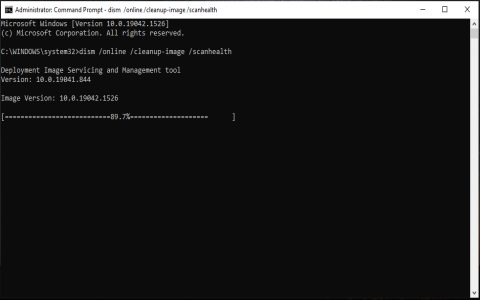The fileproviderd process on macOS is a system daemon responsible for managing access to files stored in cloud services like iCloud Drive, Dropbox, OneDrive, and Google Drive. When it consumes high CPU resources, it typically indicates intensive syncing activity, errors, or conflicts.
Common Causes for High CPU Usage
- Initial or Large Syncs: Setting up a new cloud service or syncing a large volume of files/changes can temporarily cause high CPU usage.
- Corrupted Sync Data: Issues with cached files or metadata related to cloud storage.
- Third-Party Application Interference: Applications heavily interacting with cloud storage or conflicting with the sync process.
- Software Bugs: Outdated macOS versions or bugs within the cloud storage applications themselves.
- Network Problems: Unstable or slow internet connections can cause
fileproviderdto work harder, retrying operations. - Problematic Files: Specific files that are corrupted, too large, or have unsupported characters in their names can cause sync loops.
Troubleshooting Steps
Before proceeding, ensure your important data is backed up.
1. Basic Checks & Resets
- Restart Your Mac: This can often resolve temporary glitches.
- Check Cloud Service Status: Visit the status pages of your cloud providers (e.g., Apple System Status for iCloud) to ensure there are no widespread outages.
- Pause and Resume Syncing:
- iCloud Drive: Go to System Settings > [Your Apple ID] > iCloud > iCloud Drive. Toggle it off, wait a few minutes, then toggle it back on. You might be prompted about keeping or deleting local copies; choose carefully.
- Third-Party Services (Dropbox, OneDrive, etc.): Open the respective application's preferences and look for options to pause and resume syncing.
- Update Software:
- Ensure macOS is up to date: System Settings > General > Software Update.
- Update third-party cloud storage applications from the App Store or their official websites.
2. Identify Problematic Services or Files
- Activity Monitor: Open Activity Monitor (Applications > Utilities). Select the CPU tab and find
fileproviderd. In the bottom part of the window, or by double-clicking the process and going to the "Open Files and Ports" tab, you might see which files or cloud services it's actively working with. This can offer clues. - Disable Services One by One: If you use multiple cloud services, try disabling them one at a time (as described in "Pause and Resume Syncing") to see if the CPU usage for
fileproviderddrops, helping you isolate the problematic service. - Check for Stuck Files: Look for any files that are constantly trying to upload or download but never complete. Finder's sidebar often shows iCloud Drive status, and third-party apps have their own status indicators. Try moving such files out of the synced folders temporarily.
3. Advanced Steps (Use with Caution)
- Force Quit and Relaunch
fileproviderd:Open Terminal (Applications > Utilities) and type:
killall fileproviderdthen press Enter. The system will automatically restart the process. This can sometimes clear a stuck state.
- Boot in Safe Mode: Restart your Mac and hold down the Shift key until you see the login window. Safe Mode prevents many third-party extensions and login items from loading. If
fileproviderdbehaves normally in Safe Mode, a third-party application is likely the cause. You'll then need to identify and remove or update the problematic software. - Check Console Logs: Open Console (Applications > Utilities). Start streaming messages and search for "fileproviderd". Look for recurring errors or messages that might indicate what it's struggling with. This is more technical but can provide specific clues.
- Resetting Specific Cloud Provider Data (if isolated):
If you've identified a specific cloud service causing the issue (e.g., OneDrive), fully signing out of that service, ensuring its local data is cleared (if an option is provided by the app), and then signing back in can sometimes rebuild the sync database. This can lead to re-downloading all data for that service, so ensure you have a good internet connection and sufficient time.
If high CPU usage persists after trying these steps, especially if it's consistently high and not related to a large, legitimate sync operation, there might be a deeper issue with your macOS installation or a specific cloud provider's integration. Contacting Apple Support or the support for the specific cloud service might be necessary.









